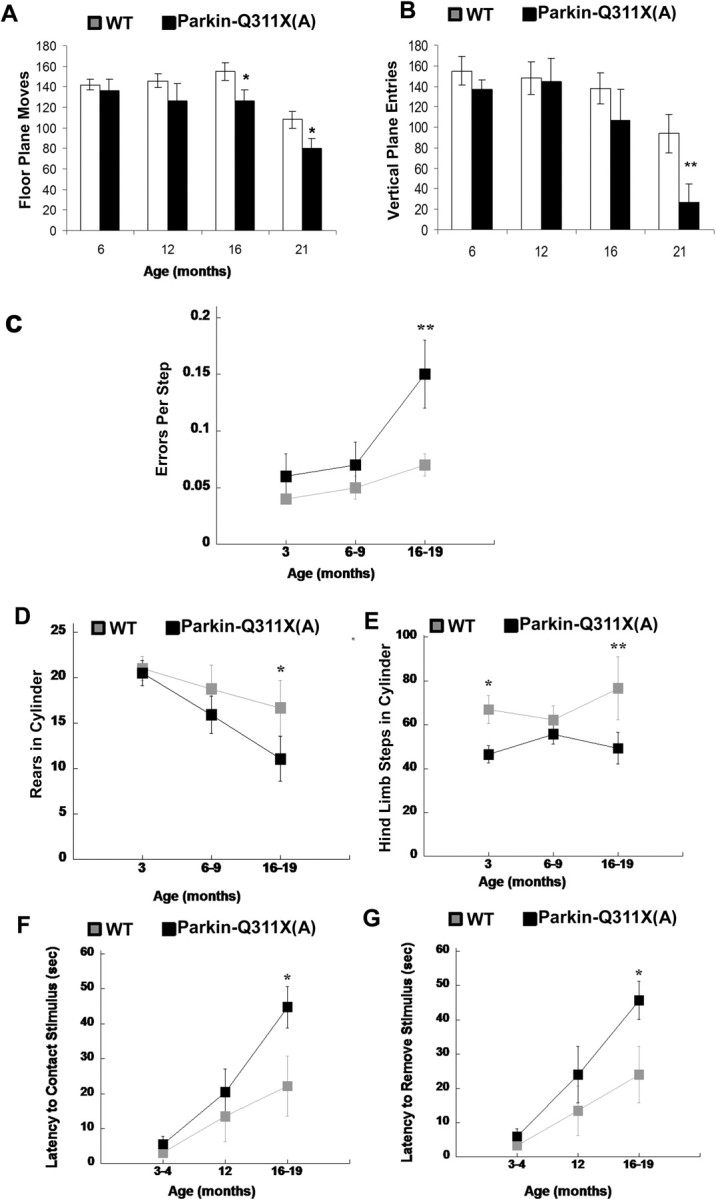Figure 3.

Progressive behavioral deficits in Parkin-Q311X transgenic mice. A, B, Locomotor activity in independent groups of naive Parkin-Q311X(A) (n = 12, 6, 7, 8 for different time points) and wild-type littermate (n = 6, 5, 7, 13 for different time points) mice was measured in the open field at 6, 12, 16, and 21 months of age. Parkin-Q311X mice demonstrate significant progressive hypoactivity as measured by floor plane moves and vertical plane entries in open field (significant genotype and time difference revealed by two-way ANOVA, p < 0.001; significant genotype difference at the same time point is indicated; *p < 0.05, independent sample Student's t test). C, Motor performance and coordination were repeatedly measured in Parkin-Q311X(A) (n = 12) and wild-type (n = 9) mice using the challenging beam. Errors per step were measured at 3, 6–9, and 16–19 months of age. Parkin-Q311X(A) mice made more errors per steps while traversing the beam compared with wild-type mice; **p < 0.01 compared with wild-type mice at the same age. D, E, Spontaneous activity of Parkin-Q311X(A) mice and wild-type littermates in the cylinder was measured at 3, 6–9, and 16–19 months. Rearing (D) and hindlimb (E) steps were measured. Transgenic mice were less active in each measure compared with wild-type mice at the older ages. *p < 0.05 compared with wild-type mice. F, G, Motor response to sensory stimuli was measured in the adhesive removal test at 3–4, 12, and 16–19 months of age [Parkin-Q311X(A) (n = 11) and wild-type (n = 8)]. Parkin-Q311X(A) mice had significantly slower contact (F) and removal time (G) compared with wild-type mice at 16–19 months of age (*p < 0.05, Mann–Whitney U test). Error bars indicate SEM.
